Situational Analysis – Purpose, Elements, Framework & Strategic Plan
by Mashum Mollah Business Intelligence Published on: 22 September 2021 Last Updated on: 05 May 2025
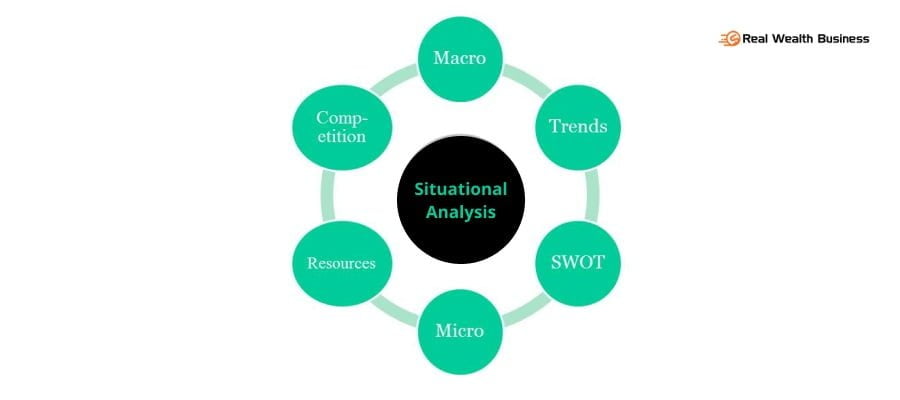
Market research is a vital aspect when it comes to creating an assessment of your business. Especially if you want to conduct a situational analysis, there are so many things that you have to take into account. Examples: strengths, weaknesses, opportunities, and threats. Precisely, situation analysis is an effective marketing tool using which you can make crucial decisions for your business.
Are you the one among them who is struggling hard to evaluate your business’s health? Or aren’t you able to extract expected results from your strategic marketing plan? The gap must be from your end. Not to worry anymore; check out this guide to identify the improvement areas using Situation analysis.
What Is A Situational Analysis Overview? – Define Situation Analysis

Some of you may have heard the term Situation Analysis, and some of you may haven’t. To those who are aware of it, what would you say if you were asked to define situational analysis? I know you can tell situation analysis definition, but can you highlight what its key importance is in strategic marketing?
This is what the present section is going to give you – Define the situational analysis
Situational analysis or situation analysis is an amalgamation of several methods for evaluating external and internal business factors. The external and internal factors are nothing but the opportunities, threats, strengths, and weaknesses of a firm. This assessment is also popular as a SWOT analysis (strengths, weaknesses, opportunities, and threats). While strengths and weaknesses constitute the internal setting, opportunities and threats are the external environmental factors.
What Is The Purpose Of Situation Analysis?

I assume you are thinking about developing a marketing strategy, right? It is, therefore, essential to do a situation analysis at every stage to get a clear picture of your business health. Here are some of the key benefits of Situation Analysis that you should never miss:
- You can see those sides of your business that need quick improvement (weaknesses) along with risk factors (threats), merits (strengths), and areas of capitalization (opportunities).
- Situational analysis examples help you assess the competitors from a broader level.
- Using situational analysis templates, it is possible to target the key business objectives.
- Lastly, the models of situation analysis outline projected growth, potential customers, competitor’s performances, opportunistic areas, etc.
Elements Of Situational Analysis In Strategic Marketing- A Situational analysis Format and Strategic Plan
Now you know the rationale for using the situation analysis model and situation analysis definition. So why don’t you learn how to implement it? Basically, there are a number of methods of conducting a comprehensive situation analysis marketing – 5C’s analysis, Porter Five Forces, and SWOT.
But situational analysis SWOT is the most popular among marketers. Do you know how to do a perfect situation analysis SWOT? Take a look at the below table to get more insights:
i) Strengths
- What do others see as your strengths?
- Which resources of yours are unique than the others?
- What can you do well?
Situation Analysis Examples for Strengths: staff skills, the cost-effectiveness of resources, existing brand image, or robust operational processes
ii) Weaknesses
- What are your disadvantages?
- How are you lagging behind your competitors?
- In which areas should you put your major focus?
Situation Analysis Examples for Weaknesses: Lack of optimum resources, absence of staff motivation, unimproved systems, low brand image, etc
iii) Opportunities
- What possibilities are open to you?
- How can you convert your strengths and weaknesses?
- Which latest industrial trends can you adopt?
Situation Analysis Examples for Opportunities: The Emerging markets. Advancement in technologies, latest market trends, specific demographic patterns.
iv) Threats
- What upcoming risk factors are waiting for you?
- Aggressive growth of your rivals
- How your weaknesses can expose your threats
Situation Analysis Examples for Threats: political disturbances, natural calamities, high debt, data privacy concerns, etc
Some Free Marketing Situational Analysis Template Frameworks
Wasn’t the SWOT analysis model interesting? It’s even pretty easy to do as well as interpretable. However, for that, you have to learn some situation analysis SWOT templates. Wanna get some from this blog? Take a look below to choose the best customized Situational Analysis Template for your business.
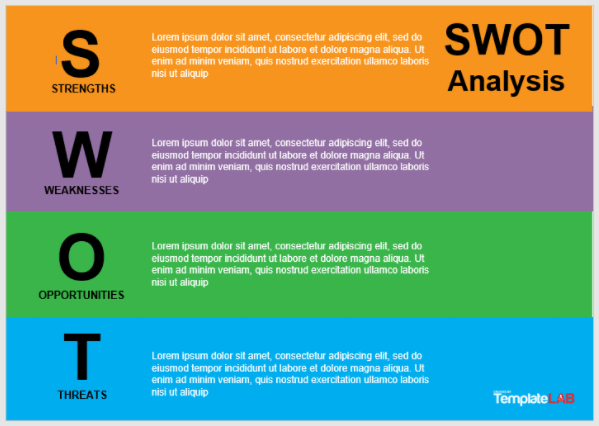
Source: Image Link
This situational analysis outline SWOT is in tabular format with an attractive yet conceptual design. While the 1st column represents Situational SWOT analysis factors, the 2nd column describes each factor in detail.
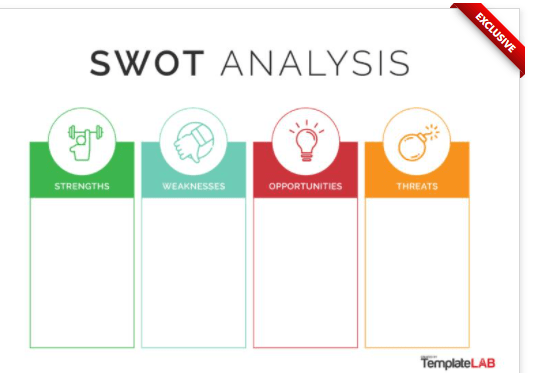
Source: Image Link
From this template, the outcome of the situational analysis will be pretty clear. This separate box format will make your situation analyses pretty clear, constructive, and coherent. The icons above also give a real voice to the template.
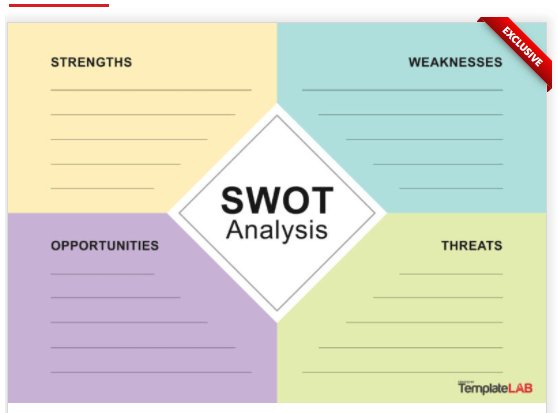
Source: Image Link
This unique situation analysis outline is pretty simple to interpret. The diagonal connection between weaknesses – opportunities and threats – strengths makes it more relevant.
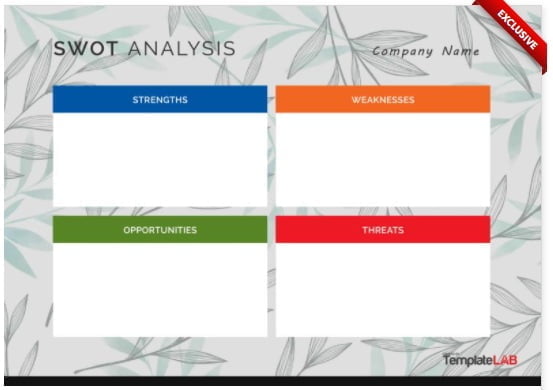
Source: Image Link
This situation analysis SWOT design has 4 individual boxes with mentioned names of 4 principal hands of the SWOT model. Also, the boxes are detached from each other giving separate identities to each.
Frequently Asked Questions
Q1. What Is Situational Analysis?
What Is Situational Analysis? Situational analysis is a specific tool to understand the internal and external environments of a business. Moreover, it helps an entity to develop growth objectives by evaluating organizational health.
Q2. How To Write A Situational Analysis?
Situational analysis can be done in several ways. For example, you can conduct a detailed situation analysis using SWOT, Porter’s 5 forces and 5C’s framework, and PESTLE. Please note that the main funda of the situation analysis framework is to analyze the business environment.
Q3. According To Your Textbook, Which Of The Following Is A Factor In Situational Audience Analysis?
“Size of the audience” is the answer to the question “According to your textbook, which of the following is a factor in situational audience analysis? ”
Q4. A Situational Audience Analysis Includes An Evaluation Of The…
Situational Audience analysis is a whole different concept from the situational analysis SWOT. Situational audience analysis includes an evaluation of the audience size, speaking event, place, and time of speech.
Q5. What Are The Common Components For Situational Analysis?
There are 5 key components for situation analysis. These are customers, suppliers, competitors, government, and legal issues. Based on these factors, you can develop any situation analysis example.
Q6. The Outcome Of Situational Analysis Is…
The outcomes of the situational analysis are identification and address of planning issues, assumptions, and problems.
The Final Words
To summarize, situational analysis is indispensable for your business at every step. Starting from the development of a business plan to strategic marketing and performance analysis, you cannot skip it. Through evaluation of the internal and external environment, it is, therefore, possible to make crucial business decisions.
I hope the concept of Situation analysis SWOT and situation analysis outline is crystal clear to you. So what are you waiting for? Try out the SWOT analysis templates we presented above, and let us know your experiences in the comment area below.
Read Also:



































































































